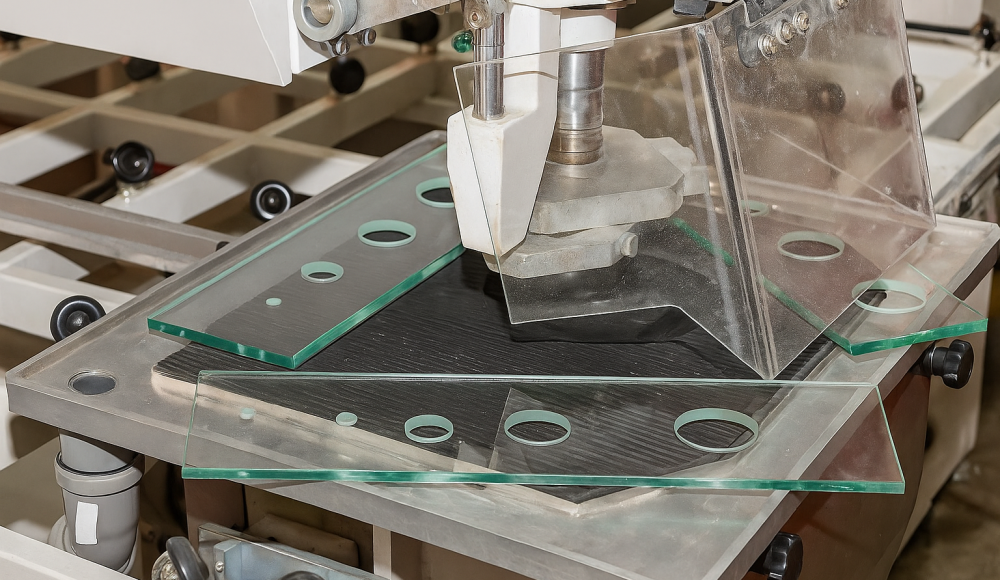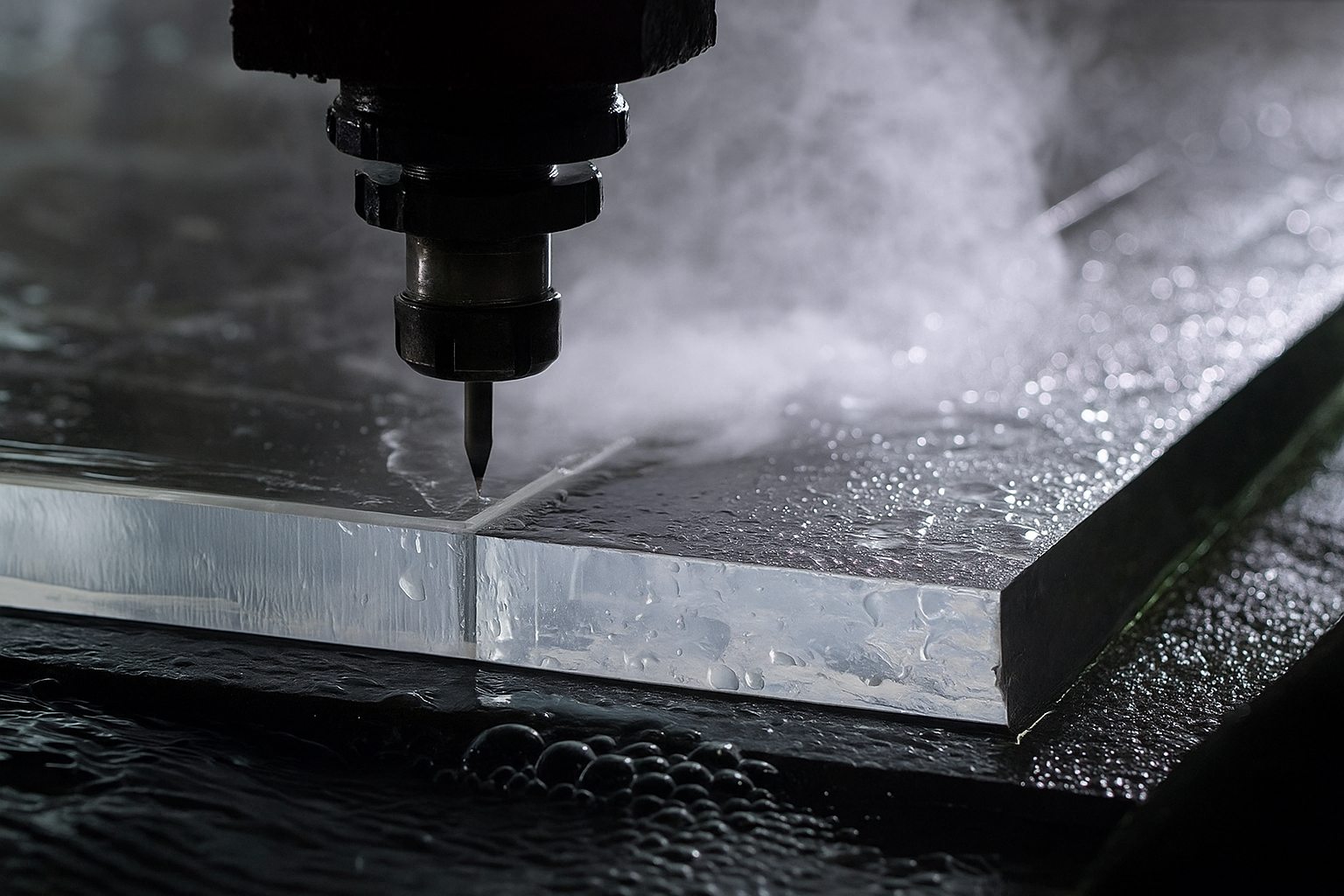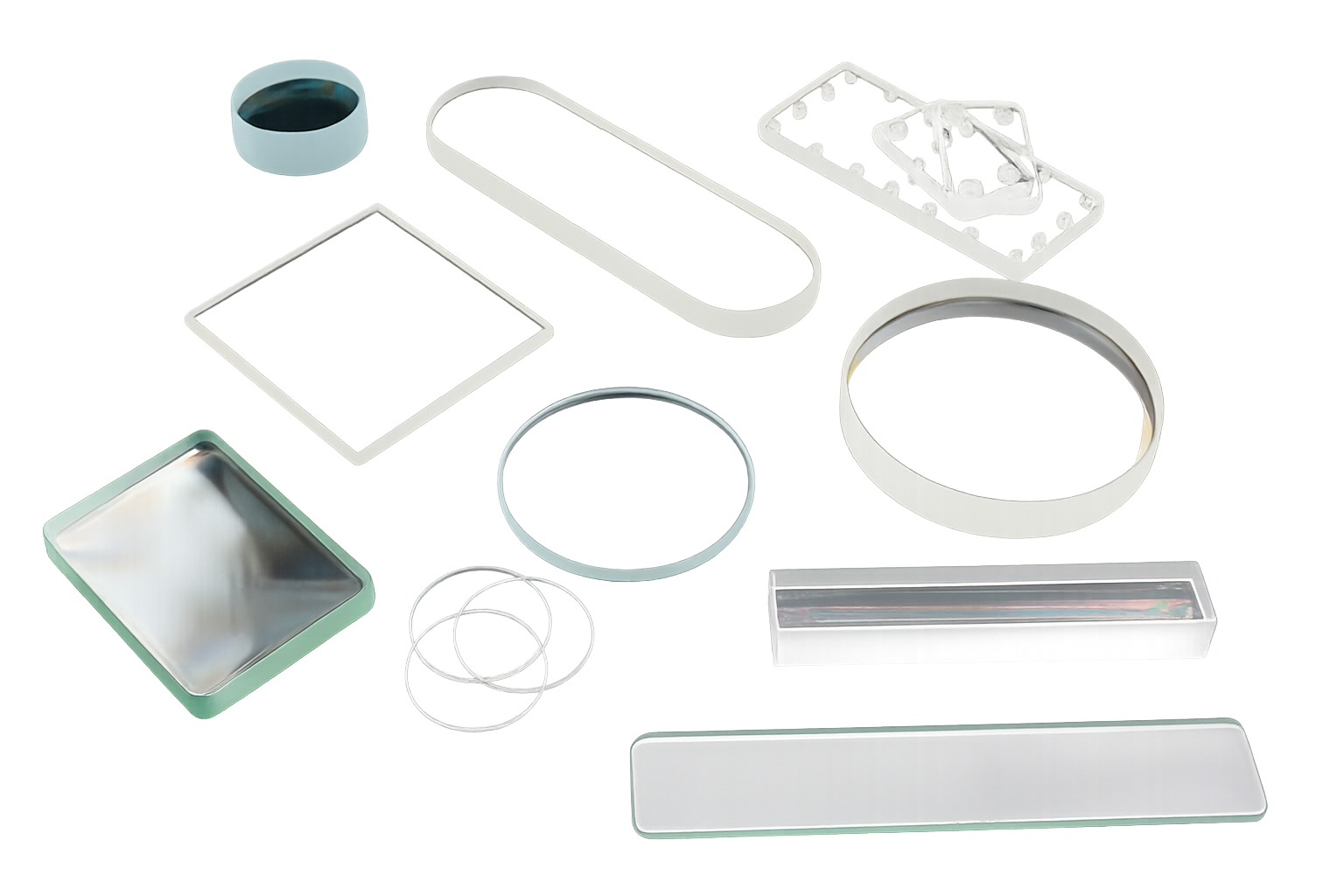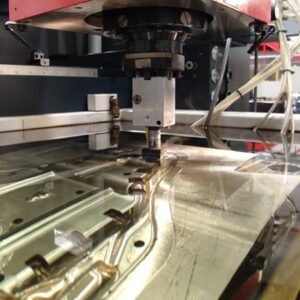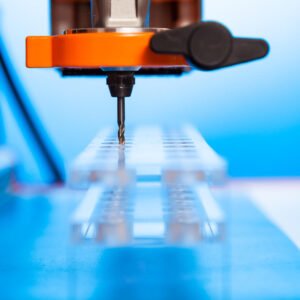La lavorazione a CNC in vetro ha rivoluzionato il modo in cui vengono fabbricati i componenti di precisione, consentire a progettisti e ingegneri di realizzare geometrie complesse e tolleranze strette che erano precedentemente poco pratiche o impossibili. Dai dispositivi microfluidici ai grandi pannelli architettonici, Il vetro machined CNC offre una precisione eccezionale, ripetibilità, e finitura superficiale. Questa guida approfondisce profondamente i metodi, materiali, vantaggi, e considerazioni di lavorazione a CNC in vetro, autorizzandoti a prendere decisioni informate per il tuo prossimo progetto.
Il vetro può essere lavorato a CNC?
Sì, aumento della rigidità della macchina utensile, design del mandrino, utensileria, e il controllo del processo ora lo rende fattibile al vetro CNC-Machine in modo affidabile. Tuttavia, La fragilità e la durezza intrinseche di Glass richiedono tecniche e utensili specializzati per ridurre al minimo le scheggiature, cracking, e usura degli utensili. Con corretto fissaggio, Consegna del refrigerante, e ottimizzazione dei parametri, La lavorazione a CNC può produrre tagli intricati, buchi, e trame di superficie in pannelli di vetro e componenti.
Come funziona la lavorazione del vetro CNC?
La lavorazione CNC in vetro segue il flusso di lavoro CNC standard CAD → CNC, Ma con adattamenti critici per il comportamento materiale.
Flusso di lavoro CAD a CAM
Progetto & Tollerante
Crea modelli 3D in CAD, Specificare dimensioni e tolleranze geometriche (GD&T).
Identifica le superfici critiche (per esempio., Facce ottiche) richiedere planarità o rugosità sub-micron.
Generazione del percorso utensile
Nel software CAM, Seleziona percorsi strumenti appropriati (contornatura, tasca, perforazione).
Definire il passo, step-down, velocità di alimentazione, e velocità del mandrino ottimizzate per la rimozione del vetro.
Configurazione della macchina
Fissaggio
Usa Chucks a vuoto, cuscinetti adesivi, o mascelle morbide per supportare il vetro senza indurre lo stress.
Garantire un supporto uniforme per prevenire vibrazioni e cracking.
Utensileria & Mandrino
Impiegare i mulini finali con rivestimento diamantato, trapani, e strumenti di macinazione/bava.
Mandrini ad alta velocità (≥ 30,000 giri al minuto) Riduci le forze di taglio e migliora la finitura superficiale.
Refrigerante & Controllo della polvere
Refrigerante inondata o micro-lubrificazione riduce al minimo l'accumulo di calore e scarica i detriti.
I sistemi di estrazione integrati catturano polvere di vetro per prevenire i graffi della superficie.
Operazioni di lavorazione
Passi ruvidi
Inizia con le profondità conservatori di taglio (per esempio., 0.1–0,2 mm) a velocità di alimentazione moderata per rimuovere delicatamente il materiale sfuso.
Passaggi finali
Passa ai gradini fini (≤ 0.05 mm) e alimentazione ridotta per raggiungere la rugosità della superficie bersaglio (< RA 0.2 µm).
Monitoraggio del processo
Utilizzare sensori di vibrazione e feedback acustico per rilevare l'usura dello strumento o il cracking in tempo reale.
Passi di post-machining
Lucidatura
La lucidatura secondaria con cuscinetti di diamanti fine o liquame può migliorare ulteriormente la chiarezza ottica.
Temperatura/rafforzamento
Il rafforzamento termico o chimico migliora la tenacità, critico per i componenti portanti o di sicurezza.
Ispezione finale
Macchine a misurazione delle coordinate (CMMS), interferometri, e i profili di superficie verificano le specifiche geometriche e di superficie.
Tecniche utilizzate nella lavorazione a CNC in vetro
Le proprietà uniche di Glass richiedono un kit di strumenti diversificato di tecniche di lavorazione:
Fresatura & Contorno
Rimuove il materiale per formare bordi, recessi, e forme 3D con diamanti mulini.
Perforazione & Noioso
Crea buchi precisi dal sub-0.5 mm a diversi millimetri usando esercitazioni e allevatori rivestiti di diamanti.
Incisione & Intascare
Taglierine di diamanti intagliano motivi decorativi, Numeri di serie, o tasche poco profonde per le guarnizioni.
Scanalatura & Scanalatura
Forma canali stretti per guarnizioni o funzionalità di assemblaggio; Critico nelle applicazioni di gestione dei fluidi.
Rettifica & Lapping
Tecniche di perfezionamento della superficie che portano planarità e rugosità nelle tolleranze ottiche.
Taglio a getto d'acqua (Sistemi ibridi)
La testa abrasiva a getto d'acqua su una piattaforma CNC raggiunge i profili 2D senza stress termico.
Rafforzamento termico/chimico
Trattamenti post-machining-bagni di scambio ionici o tempera, incresparsi la compressione e la durata della superficie.
Tipi di vetro adatti per la lavorazione a CNC
| Tipo di vetro | Proprietà chiave | Usi comuni |
| Borosilicato | Bassa espansione termica, elevata resistenza chimica | Labware, Ottica di precisione |
| Soda-lime | Economico, lavorabile, forza moderata | Pannelli architettonici, componenti decorativi |
| Silice fusa | Espansione ultra-bassa, alta chiarezza | Wafer a semiconduttore, Ottica ad alta potenza |
| Aluminosilicato | Molta forza, Buona stabilità termica | Schermi per smartphone, coperture per il display durevoli |
| Vetro di piombo | Alto indice di rifrazione, denso | Lenti di precisione, prisma |
| Quarzo | Purività eccezionale, Trasparenza UV, elevata resistenza al calore | Lampade UV, finestre di processo a semiconduttore |
Vantaggi della lavorazione a CNC di vetro
Alta precisione & Ripetibilità
Ottenere tolleranze di ± 10 µm in modo coerente tra i lotti.
Geometrie personalizzate complesse
Produrre sottosquadri, microcanali, e superfici a forma libera in una singola configurazione.
Finitura superficiale superiore
Ra giunta a 0.05 µm senza una vasta lucidatura manuale.
Efficienza materiale
Perdita di kerf ridotta al minimo e rottami attraverso percorsi degli strumenti ottimizzati e nidificazione.
Automazione & Sicurezza
Il controllo CNC riduce l'esposizione all'operatore a frammenti di vetro; Le opzioni di caricamento automatizzate aumentano il throughput.
Limitazioni della lavorazione a CNC di vetro
Rischio di fragilità
Sezioni sottili (< 2 mm) e gli angoli stretti possono rompersi sotto stress.
Attrezzatura & Costo degli utensili
Strumenti ad alta precisione e strumenti di diamanti richiedono un investimento di capitale significativo.
Competenza dell'operatore
Richiede un allenamento specializzato nel comportamento del vetro, Selezione degli strumenti, e messa a punto del processo.
Applicazioni di lavorazione CNC in vetro
Ottica & Fotonica
Lenti, prisma, guide d'onda, ed elementi di forma di raggio.
Attrezzatura a semiconduttore
Substrati di wafer, Maschere Windows allineatore, e coperture protettive.
Medico & Biotecnologia
Patatine microfluidiche, Lumen di catetere, Camere di diapositiva diagnostica.
Aerospaziale & Difesa
Finestre di pressione, Alloggi per sensori, e viste ad alta temperatura.
Elettronica di consumo
Copertine touchscreen, Coperture per lenti per fotocamera, e parti di vetro decorative.
Architettonico & Decorativo
Pannelli di vetro inciso, Apparecchi di illuminazione, e installazioni artistiche.
Considerazioni sui costi
Spese in conto capitale
Macchina CNC con mandrino ad alta velocità: $150,000- $ 500.000+.
Strumenti con rivestimento diamante: $100- $ 500 per cutter.
Costi operativi
Salari per operatori qualificati, refrigerante, usura degli utensili, e manutenzione.
Economia del volume
Volumi più elevati compensare costi di configurazione; Le piccole corse portano il premio per parte.
Progettare complessità
Caratteristiche intricate aumentano il tempo di ciclo; Equilibrio tra ambizioni di progettazione e budget.
Confronto con altri metodi di fabbricazione del vetro
| Aspetto | Lavorazione CNC | Taglio laser | Tecniche manuali |
| Precisione | ±10 µm | ± 50–100 µm | ± 100–300 µm |
| 3Capacità d | Contorni e sottosquadri 3D completi | Principalmente profili 2D | Forme limitate |
| Stress termico | Minimo (con refrigerante) | Potenziali micro-crack | Basso ma incoerente |
| Tempo di installazione | Moderare (Programmazione di cam) | Basso | Molto basso |
| Finitura superficiale | RA 0,05-0,2 µm | RA 1-3 µm | RA > 3 µm |
Selezione di un provider di lavorazione CNC in vetro
Attrezzatura & Certificazioni
Cerca iso 9001:2015, AS9100 per aerospaziale, o ISO/IEC 17025 per metrologia.
Competenza tecnica
Rivedere i casi di studio in ottica, medico, o industrie semiconduttori.
Controllo di qualità
Sondaggio nel processo, Ispezione CMM, interferometria, e profilometria di superficie.
Tempi di consegna & Capacità
Conferma le capacità di throughput e i piani di backup per le corse urgenti.
Servizi di post-elaborazione
Lucidatura, tempra, rivestimento, e integrazioni di assemblaggio.
Caso di studio: Massima precisioneProcesso di lavorazione CNC in vetro
Ispezione in arrivo
Verifica il tipo di vetro, spessore, e pre-certificare la planarità con interferometria laser.
Ottimizzazione del percorso degli strumenti
Utilizzare modelli a camme interni sintonizzati per un coinvolgimento minimo degli strumenti e controllo delle vibrazioni.
Macchinatura a più stadi
Taglio ruvido a 20,000 giri al minuto; finire il passaggio a 40,000 Rpm con 1 µm Step-down.
Miglioramento della superficie
Rafforzamento opzionale di lucidatura del liquame diamante o scambio ionico.
QA finale & Confezione
CMM e ispezione ottica; Calco personalizzata con schiuma di smorzamento delle vibrazioni.
Conclusione
La lavorazione del CNC di vetro colpisce il divario tra ambizione di design e produzione, Sbloccare le imprese di precisione e complessità che guidano l'innovazione in tutti i settori. Comprendendo le sfumature della selezione degli strumenti, Parametri di processo, e comportamento materiale, Puoi sfruttare la lavorazione a CNC per produrre componenti di vetro che soddisfino i più severi standard di prestazioni ed estetica. Quando si valutano i partner, Dai la priorità alle competenze tecniche, sistemi di qualità, e una comprovata esperienza nella fabbricazione di vetro, come dimostrato dalla precisione Top.
Per saperne di più:
Servizi di lavorazione di precisione

